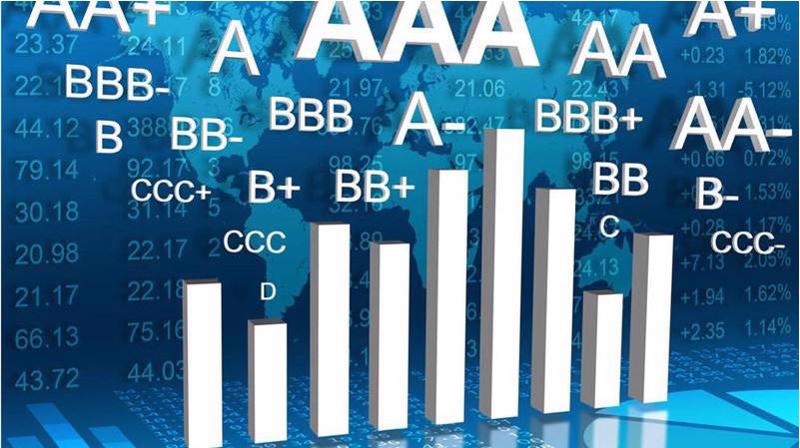Credit rating services taking shape
The long-anticipated credit ratings landscape in Vietnam undergoes significant changes

Credit rating activities in Vietnam have been undergoing significant changes in line with the new economic cycle. Within this cycle, the country’s corporate bond market is currently experiencing unprecedented events related to credit ratings, such as various upgrades and downgrades. These actions serve to clearly classify the quality of products within the market, distinguishing between premium “brand-name” offerings and those that are more commonplace. This differentiation enhances market liquidity and attracts greater participation from institutional investors.
At the “Developing the Corporate Bond Market by 2030: A Perspective from Credit Ratings” seminar organized by Vietnam Economic Times / VnEconomy / Tap chi Kinh te Viet Nam in collaboration with Moody’s Ratings and VIS Rating on May 17 in Hanoi, Mr. Duong Duc Hieu, Director and Senior Analyst, Corporates, at VIS Rating emphasized the early onset of credit rating activities in corporate bond markets across the Asia-Pacific region. The involvement of credit rating activities has been accompanied by a substantial increase in a country’s market scale, characterized by exponential growth.
He pointed out that while corporate bond markets in Asia have sizes ranging from hundreds of billions to trillions of USD, Vietnam’s market currently stands at around $40 billion. This disparity, however, underscores the substantial potential for development within the country’s market.
Nascent development
According to a report from the Banking and Financial Institution Division at the Ministry of Finance (MoF), the total value of corporate bonds with credit ratings stood at nearly VND27 trillion ($1.06 billion) in 2023, representing a ten-fold increase compared to 2022. However, Vietnam’s credit rating market is still in its infancy, and this figure accounts for only some 9 per cent of the total volume of corporate bond issuances last year.
When compared to the target of achieving a corporate bond market size of at least 25 per cent of GDP by 2030 and when viewed against other markets in the region, it is quite clear that Vietnam’s market remains relatively modest. The overall debt in its entire corporate bond market amounts to approximately 10 per cent of GDP, whereas neighboring countries like Malaysia, Singapore, and Thailand see rates of 56 per cent, 38 per cent, and 25 per cent. Credit rating agencies in Vietnam therefore stand to benefit greatly from the market’s potential and from the government’s recent regulatory measures pertaining to the market.
Stepping into 2024, a new era dawned in Vietnam’s credit rating landscape with it becoming a mandatory requirement for companies issuing individual bonds under specific circumstances, as outlined by Decree No. 65/2022/ND-CP issued on September 16, 2022. This requirement hinges upon the magnitude and extent of corporate bond issuance activities. Credit ratings are mandated for companies issuing bonds with an aggregate face value exceeding VND500 billion ($19.6 million) within each 12-month period, surpassing 50 per cent of their charter capital based on the latest financial statement. Similarly, it applies to entities with total outstanding bonds upon registration exceeding 100 per cent of their charter capital based on the latest financial report.
Experts at VIS Rating believe a distinct paradigm shift in the contemporary development cycle of the corporate bond market involves the imperative role credit rating agencies play. This represents a novel dimension that was absent in preceding cycles, where credit ratings failed to fully capture internal company dynamics and fluctuations.
Regarding the proliferation of credit rating entities, Mr. Hieu highlighted a noteworthy observation: there appears to be no direct correlation between the size of a bond market and the number of domestic credit rating agencies. Even in prominent markets like Japan and South Korea, only 2-3 credit rating agencies are operational. Similarly, within ASEAN, countries boasting sizable markets, such as Malaysia and Thailand, only have two credit rating agencies each.
Three key values
Credit ratings play a vital role in shaping a corporate bond market by offering dependable insights into issuer quality and debt instruments. Examining the three key values and notable advantages that credit ratings provide to the Asian and Vietnamese markets, Mr. Hieu underscored the first aspect as being the comprehensive information companies divulge in credit rating reports. The informative aspect of credit ratings has been substantiated and clearly illustrated in previous growth cycles.
To illustrate, credit rating reports delineate companies’ and bonds’ rating scores, recent credit rating endeavors undertaken by these entities, and upgrades, downgrades, or the prospects of credit rating scores. “To furnish this comprehensive data, VIS Rating conducts thorough research, analysis, and direct dialogue with companies and financial institutions to incorporate information into reports aimed at investors,” he explained.
Secondly, credit ratings dissect risks on each bond type. This, he went on, entails credit ratings categorizing the quality of individual bond types based on issuer risk, bond payment priority, or security measures such as collateral, whether the bond is guaranteed, and so forth. Vietnam has thus far limited its credit ratings to issuers and has yet to specifically mandate ratings for each bond type, but this warrants closer consideration in the new development phase. Nevertheless, without pricing classification, product quality differentiation may not yield significant benefits.
And thirdly, one of the most significant aspects of credit ratings lies in pricing differentiation, commonly referred to as distinguishing between “premium” and “economy” categories, which are priced differently. According to Mr. Hieu, bonds represent a financial investment vehicle with notably volatile pricing influenced by macro-economic indicators. Examining Asian markets, such as gathering ten years of data from China, South Korea, and Malaysia, spanning approximately 20 years, it becomes evident that the prices of bond baskets fluctuate, yet a clear disparity persists between AAA-rated and AA-rated bond baskets, with consistently differing pricing levels. This serves as the paramount value proposition, catering to the diverse needs of investors. In Vietnam’s previous and current development stages, such nuanced classification has been absent, posing challenges for investors in selecting products that align with their risk appetite.
Experts believe that there is also a concerning discrepancy when comparing credit-rated corporate bonds in Vietnam to that of other Asian nations, as they are notably low. However, viewing this from a positive angle, there is significant promise for growth in the credit ratings market. Realizing this potential, however, requires collective effort from all stakeholders to foster the robust development of credit rating activities.
Experts also suggest that businesses need to take a more proactive and mindful approach to credit ratings. This entails enhancing transparency in capital mobilization and utilization, actively adopting credit ratings on corporate bonds, and willingly providing information on financial and operational performance for investor access. Moreover, investors are rightfully empowered to demand heightened quality assurance for investment products. One expert underscored that these concerted efforts will propel market development, aligning with the government’s goal of expanding the market to at least 25 per cent of GDP by 2030.







